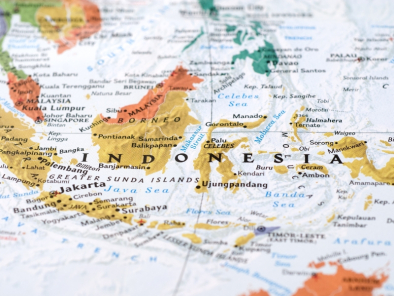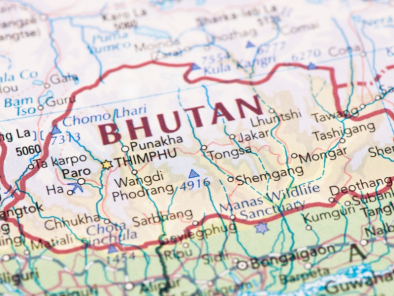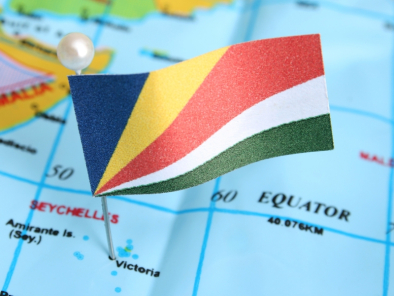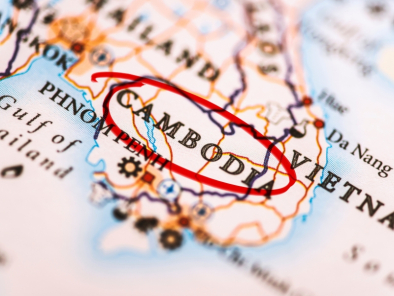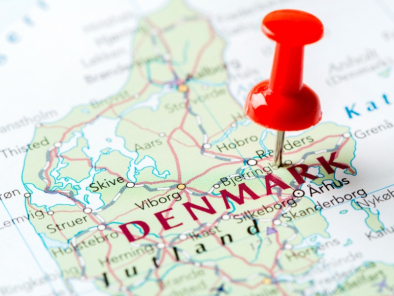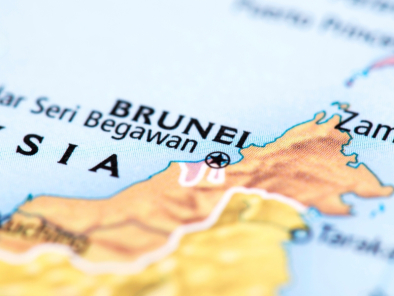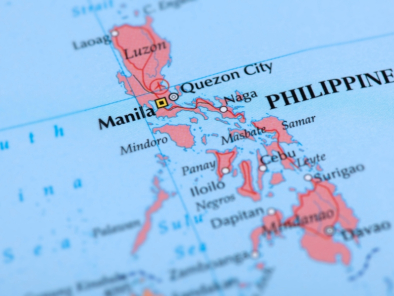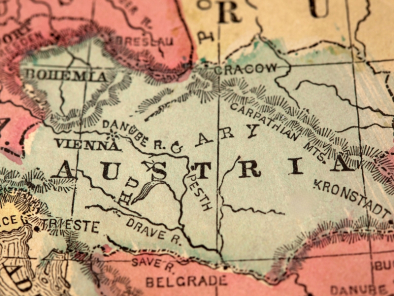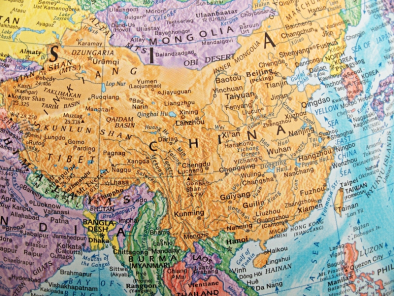NETHERLAND
Netherlands is located in the northwestern Europe.
It borders the North Sea to the north and west, Belgium
to the south and Germany
to the east. Throughout the centuries the Dutch have had to protect themselves
from the water by building dykes and draining lakes. The flat landscape is perfect for a cycle
trip around the bulb fields, along the rivers and canals, through the
picturesque fishing villages and historic towns, and past castles and other
places of interest. There are nature conservation areas, recreation areas and
theme parks throughout the country.
INFORMATIVE WEBSITES:
http://www.worldatlas.com/webimage/countrys/europe/nl.htm
VISA The visa is to be obtained prior to arrival in the country
|
INTERNATIONAL
AIRPORT:
|
|
|
|
Amsterdam
|
Amsterdam
Schiphol Airport
|
15 km south-west of the city.
|
You will need to
bring your own national driving license if planning to drive while in the Netherlands. A
special driving license is not necessary. If, however, your license is not in
English, it is advisable to hold an International Driving License. Although
handy for getting from A to B, cars are a liability in the Netherlands's
older cities and towns, which were not designed with automobiles in mind.
CURRENCY:
Euro is the official
currency. Currency: EURO
(EUR), EUR1=100 cents. The National Central Bank will exchange Netherlands
Guilder banknotes until January 1 2032 and coins until January 1 2007.
Notes: EUR5, 10, 20, 50, 100, 200 and 500
Coins: EUR1, 2 and 1, 2, 5, 10, 20 and 50 cents
Credit cards: All major credit cards are widely accepted throughout the
nation for all manner of goods.Exchange One of the
best ways to obtain money is to draw cash from ATMs, using an international credit or debit card. ATMs can be
found in all towns and cities and they tend to offer a better exchange rate
than traveller's cheques. Check with your bank before you travel to make sure
your PIN number will work in The Netherlands. Check also which ATM systems are
compatible with your card.
International traveller's cheques
are accepted, these and currency can be changed at exchange offices (GWT) at
Schiphol airport, railway stations and border crossings. It is possible to change
currency and cheques at hotels but the exchange rate is usually less
favourable. Popular destinations, including Amsterdam, will have highstreet bureaux de
change in tourist areas.
Telphone
|
International dialling code:
|
31
|
|
Area codes: | Amsterdam: 20, Haarlem: 23, Rotterdam: 10, The Hague: 70
|
Area codes are
preceded by 0 when dialing within the country. You can make calls from post
offices or public phone boxes. Most public phone boxes will only accept phone
cards, which you can purchase at tourist information centers and post offices.
Cheap rate telephone calls can be made between 20h00-08h00 Mon-Fri.
GETTING AROUND:
Getting
There
Air:
The main airport by flight to Netherlands
will be traveling via Amsterdam Airport Schiphol. It is the biggest International
airport in the country.
Train:
From Schiphol ther are also excellent railway connections to The
Hague, Amsterdam, Utrecht and most large cities have direct
train service. the best mode of transport in and out of Italy. Travel by train is the best.
The train travel is Kilometer wise but as distances are not that big, it
generally does not cost much.
Bus:
Buses ply the smaller routes.
CLIMATE
Lots of tourists visit Netherlands in the month of summer.
Spring is also a good time to visit the country, as the bulb flowers are in
full bloom in this season. Summers are generally warm with changeable periods,
but excessively hot weather is rare. Winters can be fairly cold with the
possibility of some snow. There is no denying that spring is the best time of
the year to sit by the canals or take a bike trip through the country.
The weather is
very unpredictable in the Netherlands; it
can be extremely changeable from day to day but also year to year. Spring is
the driest season to pay a visit. Summers are quite warm, with the warmest
weather occurring during
July and August.
Winters tend to be quite mild, although a very cold spell during January or
February is not uncommon.
Temperatures range from around zero in winter, from November through February,
to 20-25°C in the height of summer during July and August. There is an even
distribution of
rainfall throughout the year, so be sure to pack waterproofs at any time of
year and waterproof shoes are essential. Evenings are cool, even during warmer
summer months, so make sure you pack a jumper.
TIME:
Netherlands is 4 hours and 30 minutes behind India.
CLOTHING:
Required clothing, according to the season,
with light to medium weights worn in warm months and medium to heavy weight in
winter. Rainwear is advisable all year round, since rain is spread pretty
evenly over the year. Summers are lovely but along with your shorts and
beachwear pack a light-weight raincoat - the odd shower cannot be ruled out.
Winter winds can be cold and you should certainly wrap up well in January and
February. The average temperature in these months hovers just above 35F. One of
the nice things about Holland
is that the Dutch are relaxed about clothes. You wear what you feel good in -
particularly in Amsterdam
where an opera audience happily turns up in jeans and t-shirts. Which doesn’t
mean you cannot dress up? Men should bring a tie and women a skirt or dress if
you plan dining up-market. Otherwise feel free.
ELECTRICITY:
The voltage used is
220 volts.
DAILING CODE:
00 31
CUISINE
An
historic exception to the generally unremarkable Dutch table is, of course, the
range of cheeses. The centre of the cheese trade is the province of Noord Holland,
which includes the towns of Alkmaar and Edam. The Dutch also like
their curries and some of the hottest culinary inventions around grace
the tables of the nation's curry houses. Below are some typical Dutch dishes:
Stamppot: Single-handedly summing up Dutch cuisine, Stamppot is a
nourishing but unimaginative hotch-potch of mashed potato and other vegetables.
This veg-fest is often augmented with something meaty - normally a huge
sausage.
Pannekoeken: Dutch pancakes are famous the world
over and deservedly so. Sweet and savoury varieties are delicious and widely
available from stalls or dedicated pancake houses.
Poffertjes: A variation on the
pancake theme these are small sweet versions of the delicacy and are a
delicious snack. Look out for them for a sugar fix available from street
stalls.
Fritjes: French-fries Dutch style - meaning they come smothered in
mayonnaise. If you like other sauces then you're quite welcome to slather them
on as well; a vast range will undoubtedly be on offer.
Croquetten: These are deep-fried croquettes
normally filled with meat, although cheese varieties are available. A great
finger-food snack available from street vendors and especially good with
mayonnaise or the weak mustard that Dutch fastfood joints invariably have in
abundance.
Vlaai: Basically a fruit pie or pastry with origins in the south of the
country.
TIPS:
This is a matter of
personal discretion. Tips are appreciated and expected for good service in
restaurants and other places. Although restaurant bills often include a service
charge, this amount is not typically for the waiters/staff. A typical tip is
approximately 10%.
LANGUAGE:
Dutch is the official Language, though in the
hotels and your guides are well versed in English.
SHOPPING and MUST BUYS:
Shops generally open from 09h00-17h00 Mon-Sat.
Netherlands is known for its gorgeous tulips and their bulbs.
Delicious cheese, chocolate, beer and cookies are always a hit. Dutch wooden
clogs or wooden shoes are also symbols of the Netherlands, which are worth buying
as a souvenir.
Stores in the Netherlands
charge a sales tax of 15.97% on consumer goods, which is included in the
overall price. When leaving the Netherlands,
non-EU tourists can apply for a tax refund on goods bought. Most countries
offering a tax refund specify a minimum amount that must be spent in a
particular shop to claim a refund. In the Netherlands, the minimum purchase
to qualify for a refund is approx EUR 50 in one store in one day. To
reclaim tax you need to request a tax refund form, when you make a purchase,
which will state the amount of refund due. Customs officials must stamp these
documents as you leave the country and the refund will be processed and sent to
you.
Alternatively, you can purchase goods from shops participating in the Tax-free
Shopping programme (look out for the Tax-free Shopping logo displayed in
the window). Simply show your passport when you make a purchase and you will be
given a Tax-free Shopping cheque showing the refund you are owed. As you leave
the country, customs officials will stamp your cheques. You can claim your
refund from the Tax-free Shopping desk or have it sent to you. For further
information, Email: info@taxfree.nl.
CITIES: AMSTERDAM
Amsterdam
is often referred to as one of the most colourful cities in the world. It is a
place of many places of interest, famous museums, and cozy pubs.
It
is an amazingly beautiful city, which has the advantage of being very compact
and therefore easy to explore on foot. The city is a maze of canals with
several bridges spanning the canals, many dating from the 17th
Century. The buildings lining these canals only add to the charm, and most of
them were also built in the 17th century during Amsterdam’s “Golden Years” when trading was
flourishing.
Getting There
Air:
Amsteram Schipol
Airport is situated 15 km
south west of the city. Easy jet and other low cost carriers serve Schiphol,
providing a fairly economical way to city-hop to Amsterdam
from other spots in Europe.
Train:
Schiphol airport has a direct train station, with atleast seven trains an hour
to Amsterdam
central.
From Schiphol there is a direct train to AMS
Central station, for approx 3.60 Euros in 15 min. Most trains arrive and depart
from Amsterdam Centraal Station, located between the old centre and the IJ
waterfront. Other train stations are Bijlmer-Arena, Amstel, Muiderpoot(all
southeast), RAI, Amsterdam-zuid (both south), Lelylaan and Sloterdijk (both
west)
Road:
Taxis from Schipol are expensive: legal taxis have blue number plates, others
should be avoided. Some hotels in AMS and around the airport have a shuttle bus
service as well. Arriving by car to the city centre is fairly discouraged due
to narrow streets and high parking rates.
Getting Around
AMS
centre is fairly small, and almost flat, so one can easily get to most tourist
destination on foot from the train station, within 30 min. A pleasant way to
cover a lot of ground is to rent a bicycle. The city is very bike friendly, and
there are separate bike lanes on major streets. There are bike rentals shops at
stations, and around the city. Bikes cost about 9 Euros to 20 Euros approx per
day. The tram is the main form of public transport. Regional buses, and some suburban
buses, are operated by Connexxion and Arriva.
The Standard ticket for bus, tram and metro is the strippenkaart, which
are available fro machines in the metro and railway stations, from GVB office
opposite Central Station, and from supermarkets, newsagent. Alternatively one can also get a 24, 48 or 72
hour all zones bus/rail/ tram pass for a reasonable price (approx 10 Euros for
48 hrs).
Attractions
Van Gogh Museum
Portrait of Van Gogh
Nowhere else in
the world can you see so many Van Gogh paintings in one place. The museum has
approximately 200 paintings and 500 drawings by Van Gogh and his
contemporaries.
Museum: Opening times daily
10:00 to 18:00, Friday 10:00 to 22:00 Ticket office: daily 10:00 to 17.30, Friday to 21:30
The museum shop is located
on the ground floor of the museum. Here you will find a wide range of
literature on the Van Gogh
Museum, the life and work
of Vincent van Gogh and that of his contemporaries. It is also the right place
for the most beautiful, high quality reproductions, stationery and other
souvenirs. The income generated through purchases is used to support the Museum
and especially to fund new acquisitions for the collection. The museum shop is
only accessible if you are visiting the museum, each day from, daily 10:00 to
17:45, Friday to 21:45, except 1st January.
Restaurant: The museum
restaurant serves a range of snacks and beverages, simple lunch options (soup,
quiche, salads, sandwiches, etc.) and a hot meal on Friday evening. The
restaurant is accessible only through the museum and is open daily from 10:00
to 17:30, Friday to 21:30.
Library Museumplein 4: Monday to Friday 10:00 to12:30 and 13:30 to 17:00 Closed
1 January Location:
Paulus Potterstraat 7, Amsterdam.
Rijksmuseum
The biggest and the most
important museum in the Netherlands,
with a large and varied art collection. The only museum in the Holland showing a complete
overview of Dutch history. The main building is closed for major renovations
until December 2008. The Phillips wing is still open to the public, and is
functioning during the renovations as mini-Rijkmuseum. Location:
Stadhouderskade 42, Amsterdam,
Tel. +31 206 747 047 Opening hours: 09.00 am to 06:00 pm, Friday 09:00 am to
10:00 pm. Closed on 01 Jan.
St. Nicolaas Kerk
A
one minute walk from the Centraal Station lays the St. Nicolaaskerk, one of the
better-known churches in Amsterdam.
Dedicated to the patron saint of the sailors, the church was completed in 1887
and it became the leading Catholic Church in the city, replacing a number of Amsterdam’s secret
churches from the era of the Alteration.
Amsterdam Historical museum
The Amsterdam
Historical Museum
tells the compelling story of how this city grew
from a small medieval town into a modern city. Go on a fascinating
journey of discovery down seven centuries of the city's history, through the
intimate rooms and courtyards of this former Civic Orphanage, where Amsterdam’s orphan's once
lived. Guided tours available, a quick tour for those with limited time is
available at the museum shop. In our restaurant David & Goliath you can
enjoy a coffee and sandwich, or try our famous pancakes.
Location: Kalverstraat 92
1012 RM Amsterdam
Opening Hours: Monday - Friday: 10.00 - 17.00 hours
Saturday, Sunday and public holidays: 11.00 - 17.00 hours
Close: Closed: 1 January, 30 April, 25 December
To get there-transportation
(tram) 1-2-4-5-9-11-14-16-24-25 stop Spui
(museumboat) stop 4
(parking) parking Rokin
parking garages Bijenkorf, Het Muziektheater
in front of the museum there is a stop for busses (no
parking)
it is a 15 minutes walk from Central Station
Madame Tussaud’s
Scenerama
In
Madame Tussaud’s on Dam square in Amsterdam
you can meet lots of famous waxworks. You can shake hands with Johan Cruijff,
or give Bon Jovi a kiss, embrace Michael Jackson and lots more. Apart from
waxworks from this century, one can also meet people fro Holland’s Golden Age, such as the famous
painters Rembrandt, Vermeer, Pieter and many more. If you want to know what Amsterdam looked 300
years ago you should not miss this part of the Scenerama.
Location:
Dam 20, Amsterdam,
Tel +31 205 221 010. Opening hours: 10:00 am-6:30 pm. Mid July – August 09:30
am – 09:00 pm. closed on 30th April.
The Royal Palace
Located
across the national monument, The Royal Palace or Koninklijk paleis dominates
the Dam Square
with its presence. The Royal Palace, designed by Jacob van Campen, was built in
1648, an Amsterdam’s
city hall. When Louis Napoleon arrived in Amsterdam,
1808, he had the city hall turned into a palace, which was destroyed by fire.
Although this palace is still the official residence, the royal family lives in
The Hague.
However, Queen Beatrix does host official functions here. The interior of the
palace is open for public if no ceremonies are scheduled.
Anne Frankhuis
(Anne Frank House)
The
very popular Anne Frank House annually attracts roughly aboult half a million
people. Its historic home where Anne Frank, her family and four other Jewish
people hid from the occupying Germans during World War II, after fleeing their
native Germany.
De Nieuwe Kerk
Amsterdam’s
Nieuwe Kerk (New Church)
built in the late 14th century, sits on a corner of the Dam, next to
the Royal Palace. Its architecture as we see it
today is predominantly Gothic. Many famous Dutch-men are buried inside the
church. Also inside, the beautiful pulpit is considered a baroque masterpiece.
Netherlands Maritime Museum
The
highlight of the maritime museum is the newly built reconstruction of an Old
Dutch East India man that is moored just offshore.
Diergaarde Blijdorp
One
of the most beautiful zoos in Netherlands.
One can walk through the shark tunnel in the Oceanium or watch gorillas play
around. Especially for kids there is a great wooden playground. website: www.blijdorp.nl.Location: Blijdorplaan 8, Opening hours: 09:00
am – 06:00 pm from April to October.
Excursions
For a Half Day – Houseboat Museum
The
Houseboat Museum
gives you the unique chance to personally experience how exactly life is on board
houseboat in an Amsterdam
canal. Unique locations in the Prinsengracht canal on the edge of the Jordaan
provide a fitting background for the museum vessel. The spot is only 5 min.
walk from the Anne Frank House and its nearby Westerkerk church. Living on the
houseboat sounds like an alluring way of life and its increasingly popular in
the Amsterdam area,
partly due to the city’s chronic housing shortage.
For a Whole day-
The Hague
The Hague
is connected by toll-free motorway to AMS (A4 and A44). Also, through its 2
central railway stations, The Hague has direct
trains link to Schipol Airport (30 mins) and to Amsterdam city centre (45 mins). The city offers great architecture like the
medieval complex of the Bennenhof.
The Binnenhof
Binnenhof is a collection of buildings in Hague is the centre of
power in the Netherlands.
Parliament sits in the building, and the prime minister has his offices there.
Its history begins in the thirteenth century when Count Floris IV of Holland established a
residence on the site. It became the administrative centre of the counts of Holland, and the village of The Hague
grew up around it. Location: Binnenhof Information Center,
Binnenhof 8A; The Hague, Zuid-Holland 2513 AA; Netherlands
Madurodam
Madurodam
is the smallest city in the Netherlands.
All the items on view here are 25 times smaller than in real life! Be a giant
among the palaces, ships and medieval houses, and put on your seven-league
boots to walk around a football stadium. These miniature buildings are all
scale models. The canal houses of Amsterdam, the
Alkmaar cheese market
and parts of the Delta Works, all replicated in minute detail on a 1:25 scale.All
is set in beautiful gardens. Windmills turn, ships sail trough the harbour and
trains are traversing the city on the world's largest miniature railway. 13 March until 26 October 2008 Exhibition Sesame
Street in Madurodam.
By car: The Hague, follow the
signs for ‘Scheveningen Haven’. Then follow the signs for ‘Madurodam’. Public
Transport: from Hague Cnetral Station take tram 09 or bus 22. You can get out
in front of Madurodam. Location: Geprge Maduroplein 1, The Hague, Tel. +31 703 553 900. Opening
hours: Open daily 8:00 am – 7:30 pm from 22 March to 20 May. Website: www.madurodam.nl.
website: info@madurodam.nl or www.madurodam.nl Opening Hours:2 Sept. 2007- 12 March 2008 - 9:00 - 18:00;
13 March - 30 June 2008 - 9:00 - 20:00; July - 1 September 2008
- 9:00 - 23:00; 2 Sept.- 31 December 2008 - 9:00 - 18:00 . Opening times may differ
due to Madurodam by Light. The ticket counter closes one hour earlier.
Madurodam is open all year round.
. Opening times may differ
due to Madurodam by Light. The ticket counter closes one hour earlier.
Madurodam is open all year round.
Kuekenhof
is the most spectacular flower garden, when millions of tulips and other bulbs
flower.Tulips form the core of Keukenhof. The name says it all: these bulbs
bloom in spring. Keukenhof is therefore only open during this period. 32
hectars of traditional and modern garden landscaping. The other months are
intended for maintenance activities at the park, and obviously for planting the
bulbs, so that we can present colour and flowering splendour to you the
following spring.
Restaurants: At Keukenhof there are various restaurants
with terraces that look over the gardens. Perfect place to enjoy a cup of
coffee with a slice of freshly baked cake, lunch or dinner.
Location:
In 2008 Kuekenhof
is open from 20 March to 18 May
(including Sundays and public holidays) Keukenhof is open
from 08:00 to 07:30 daily (ticket office closes at 06:00)
To get there:
With
the train you can travel via Rotterdam, Utrecht or Amsterdam to Leiden. From the central
train station in Leiden
(Leiden CS) bus number 54 'Keukenhof Express' of connexxion drives directly to
Keukenhof. This bus leaves twice every hour. From Haarlem station bus 50 and 51 go to Lisse,
from there you can take a shuttle bus to Keukenhof. It is possible to purchase
a combi ticket at the Connexxion desk or from the bus driver for bus and
entrance to Keukenhof.
Bus nr 58 is an immediate connection from Schipol to Keukenhof.
There is no combination ticket available for train+bus+park. For more
information on public transport call 0900-9292 or look on www.9292ov.nl.
ROTTERDAM
The second largest city after Amsterdam
in the Netherklands is Rotterdam.
This lies aprrox 50 miles to the north. The city’s street scenery is
characterized by the large presence of people from North Africa.
Getting
there:
Rotterdam has a small airport. One can get there from London, Berlin, Oslo, Stockholm
and many more cities with low cost airline Transvania.
Train: there is a train every half and hour from Schiphol Apt to
the city, making it possible for one to fly to AMS and then take a train to Rotterdam (about 50min). From
Rotterdam, trains run to many destinations in Netherlands, including Amsterdam,
The Hague, Delft,
Eindhoven, Maastricht
and Groningen, via Zwolle.
Bus: Bus no. 33 runs regularly to the city centre and reaches
the destinations in 20 min. for approx 3Euros.
Car: Rotterdam
is easily accessible by car.
Ferry: Rotterdam being the
biggest port in the world can be reached by ferry from Rom Kingston upon Hull or Harwich in England
or from Rosyth in Scotland.
Getting
around
Rotterdam has a tramway and a metro system. But getting around by
bike is stii faster way to get from A to B within the city. The public
transport in Rotterdam
is very well organized. There is a subway, buses and an extensive system of short
distance trains: Trams which allows to quick and easy. Subway Metros depart
every 4 min. at daytime. In the evening they depart every 15 or 30 min. Except
for buses on Friday and Saturday night there is no public transportation after
midnight. Rotterdam
was built on a no. of islands and if one wants to travel from shore to shore,
the nicest way to travel is by Water taxi. This speed boat escort you over the
Maas to the Northern Island and back to the
Mainland.
Attractions:
The area
around train station Blaak
The area was destroyed by a German bombardment during the
World War II, forcing the Netherlands
to surrender. After the war, it has been reconstructed with all kinds of
strange and fascinating buildings. Especially the Cube Houses are worth seeing. The KijkKubus is
the fully furnished museum home. The interior was specially designed to give
visitors an impression of how you can live in a cube home.The market place here on each Saturday morning; it is
definitely worth a visit to get acquainted with local food and customs. And the
‘Old Harbour’ is around the corner for a
drink and a bite to eat.
Windmills
of Kinderdijk
The sight of Windmill sails spinning in the breeze stirs
the soul; of a true Hollander. Kinderdijk, a tiny community between Rotterdam
and Dordrecht, on the south bank of Lek River, has 19 water pumping windmills;
that means 76 mills sails, each with a 14-yard span, all revolving on a summer
day. It’s a spectacular sight, and one important enough for Kinderdijk to have
been placed on UNESCO’s world Heritage list.
The Kuip
The Feijenoord Stadion, better known by
its nickname de Kuip (the Tub), is a stadium in Rotterdam.
The Kuip, football stadium of the club Feyenoor is a must
see for every traveler who visits the city.
Rotterdam Zoo
With the visitor’s count of around 1.5 million people a
year, the Rotterdam zoo is one of the biggest
attractions in the Netherlands.
The zoo remains open all year long from 9:00 am to 05:00 pm and easily
accessible by public transport. The Rivera Hall entrance is very close to
Rotterdam Central station. One can either take a 12 min. walk or choose the bus
service. Rotterdam
Zoo is located in the heart of Rotterdam.
This zoo has placed a webcam in the sea lions quarters. These allow you to keep
track of what they are doing. The feedingtimes are 9 am, 10.30 am and 5.30 pm.
Maritime
Museum Rotterdam
This Maritime
museum hosts a great selection of large ship models, navigational instruments
and information and objects about Holland’s
rich naval tradition.
Excursions
For Half
Day- Euromast and Space Adventure
This slender tower, 188mts (611ft.) tall, is indisputably
the best vantage point for an overall view of Rotterdam and its environs. More than that,
though the tower contained interesting exhibitions, a restaurant and an
exciting Space Cabin ride that emulates a rocket take-off. A super – fast
elevator brings you up to the viewing platforms. One of the best ways to look
at the Rotterdam
city!
Utrecht is about 35-45 min ride by train from Rotterdam Central
Station as there are direct trains connecting to Utrecht Central Station. Utrecht is a central Dutch city with a long history and
it’s the fourth largest city in the Netherlands. Utrecht central station forms the hub of the
Dutch rail network, and is easily acceible directly, or with one change of
train, Utracht is a pleasant “Old town” with good restaurants and interesting
antique stores. Attractions are Central Museum, Domkerk
Alkmaar
The Netherlands
has long been associated with the making of cheeses, and a visit to the cheese
market at Alkmaar is as much a cultural experience
as it is a place to buy the country's most famous export. The market square is
filled with large yellow cheeses in their thousands as the local producers
flock to the town to sell their wares.
If this isn't enough then you'll have to pay a visit to the Cheese Museum,
which documents the history of the town and its cheesy product. There's also a
beer museum chronicling the other national obsession. Whatever your cilinary
tastes, the town makes for a relaxing getaway, and is a pleasant slice of small
town Holland.
Zandvoort
Zandvoort, near Haarlem, is the country's
most popular coastal destination, with long, white beaches. Bloemendaal is the
trendiest of this region's beaches, with some great clubs and bars, home to the
beautiful people who decamp from Amsterdam
in summer.
Near to Zandvoort is the Kennemer
Duinen reservation area, a designated area of natural beauty.
With cars banned and even planes prohibited from flying overhead, the
4000-hectare site is great for exploring by bike or foot and contains a wealth
of flora and fauna. All these areas are easily accessible from Haarlem
- itself only a short train rides from Amsterdam.
From Haarlem
continue your journey by bicycle, you can hire them from the train station at:
Rijwielshop-Pieters, Stationsplein 7, Tel: +31 (0)23-531-7066.
Delft
Delft is approx 1 hr
away from Delft by train; the charming town of Delft will feature significantly in many Netherlands itineraries because of
the famous
blue porcelain that
has been produced here for centuries.
Climb the steps of the Nieuwe
Kerk (New Church)
for the best view over the rooftops and make sure you visit the Royal Delft
factory where the famous blue pottery is still manufactured by hand as it has
been since the 1600s.
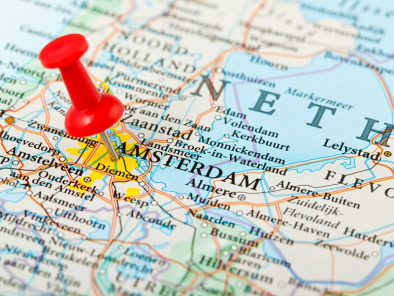
![]() . Opening times may differ
due to Madurodam by Light. The ticket counter closes one hour earlier.
Madurodam is open all year round.
. Opening times may differ
due to Madurodam by Light. The ticket counter closes one hour earlier.
Madurodam is open all year round.
